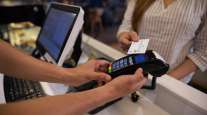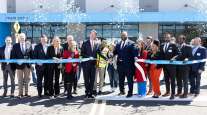Economy Accelerated at Robust 6.4% Rate Last Quarter

[Stay on top of transportation news: Get TTNews in your inbox.]
WASHINGTON — Powered by consumers, the U.S. economy grew at a brisk 6.4% annual rate last quarter — a show of strength fueled by government aid and declining viral cases that could drive further gains as the nation rebounds with unusual speed from the pandemic recession.
The April 29 report from the Commerce Department estimated that the nation’s gross domestic product — its total output of goods and services — accelerated in the January-March quarter from a 4.3% annual gain in the final quarter of 2020.
Growth in the current April-June period is expected to be faster still, potentially reaching a 10% annual pace or more, led by an increase in people willing and able to travel, shop, dine out and otherwise resume their spending habits.
Economists say that widespread vaccinations, the reopening of more businesses, a huge infusion of federal spending and healthy job gains should help sustain steady growth. For 2021 as a whole, they expect the economy to expand close to 7%, which would mark the fastest calendar-year growth since 1984.
A major reason for the brightening expectations is the record-level spending that is poised to flow into the economy. A $1.9 trillion package that President Joe Biden got through Congress in March provided, among other rescue aid, $1,400 stimulus payments to most adults.
On top of that, Biden is proposing two additional huge spending plans: a $2.25 trillion infrastructure package and a $1.8 trillion investment in children, families and education that the president promoted April 28 in his first address to a joint session of Congress.
The Federal Reserve’s ultra-low interest-rate policy, which is intended to encourage borrowing and spending, has provided significant support, too. In fact, the economy is expected to expand so fast that some economists have raised concerns that it could ignite inflation.
In part, this is because stronger demand has caused supply bottlenecks and shortages of some goods and components, notably semiconductors, which are critical to the auto, technology and medical device industries, among others.
Watch Chair Powell’s statement from the #FOMC press conference:
Intro clip: https://t.co/CVW0BufGDy
Full video: https://t.co/NaQDn5StEl
Press Conference materials: https://t.co/wvMxYxEWXU — Federal Reserve (@federalreserve) April 28, 2021
At a news conference April 28 after the Fed’s latest policy meeting, though, Chairman Jerome Powell reiterated his confidence that any surge in inflation would prove temporary. And he said the Fed wants to see a substantial and sustained recovery before it would consider withdrawing its economic support. In the meantime, Powell made clear, the central bank isn’t even close to beginning a pullback in its ultra-low rate policies.
The strength of the rebounding U.S. economy has been particularly striking given the scope of damage the pandemic inflicted on it beginning in March 2020. With businesses all but shut down, the economy contracted at a record annual pace of 31% in the April-June quarter of last year before rebounding sharply in the subsequent months.
In recent weeks, the economic gains have become increasingly evident. In March, U.S. employers added 916,000 jobs — the biggest burst of hiring since August. At the same time, the pace of layoffs has dwindled, retail spending has surged, manufacturing output is up and consumer confidence has reached its highest point since the pandemic began.
Want more news? Listen to today's daily briefing below or go here for more info:




